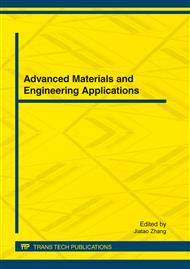p.185
p.190
p.194
p.200
p.205
p.212
p.217
p.224
p.229
Numerical Simulation of the Curing and Cooling in Reaction Injection Molding Process of Nylon 6
Abstract:
A computer simulation model was established to analyze the curing and cooling of reaction injection molding process of nylon 6 based on theory of balance equation of energy, reaction kinetics and crystallization kinetics. The reasonable assumptions and simplifications were introduced in the model, and an explicit finite difference method with MATLAB software was applied to calculate and predict the conversion and temperature distribution within a plate type mold. The results show that the center position reaches the peak temperature about 45s. The effects of the feed temperature, wall temperature, and reaction rate constant on the temperature and conversion were discussed for searching the optimum processing conditions. The results suggests that the effect of reactive rate on crystallization, molecular weight and phase structure is decided by the value of reaction constant; the influence of the mold wall temperature on reactive rate and temperature near the boundary was great; and the control of feed temperature is important in condition of low mold temperature.
Info:
Periodical:
Pages:
205-211
Citation:
Online since:
March 2012
Authors:
Price:
Сopyright:
© 2012 Trans Tech Publications Ltd. All Rights Reserved
Share:
Citation:


